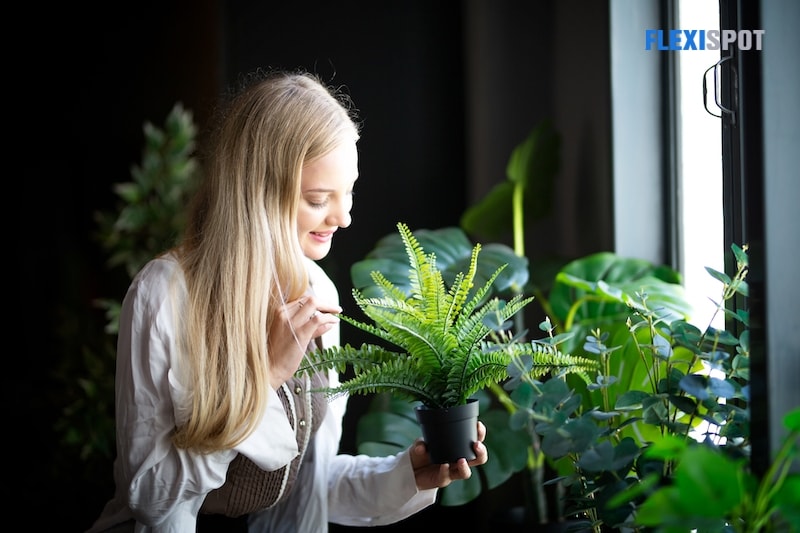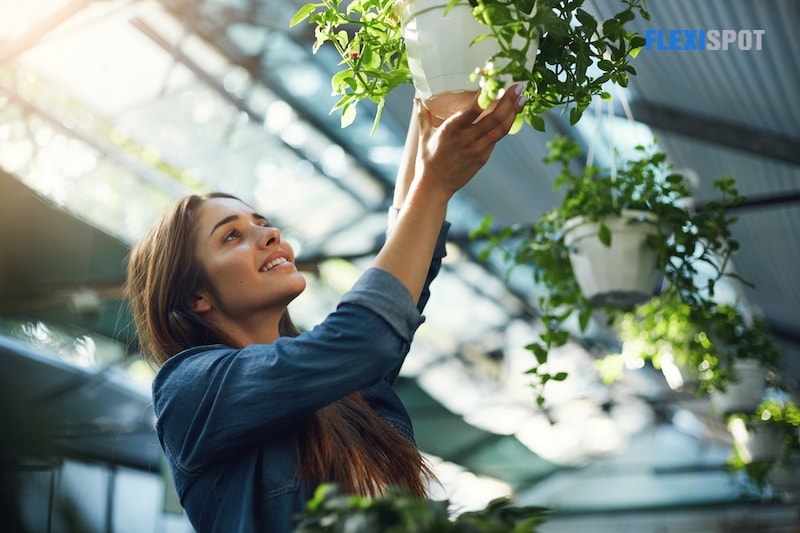Humans have an intrinsic urge to connect with nature, which experts refer to as 'biophilia.' Regrettably, the places where we spend the majority of our days to make a living, as well as where our children go to learn, have lost much of their relationship with the natural world. According to studies, even adding some greenery in the shape of houseplants may significantly impact students and employees. The same is true for distant learners, homeschooled children, and remote employees.
It's tough to go to school during these trying times. We not only have COVID-19 to worry about still, but its Delta variant is so contagious that schools and workplaces are easy targets. Adding some plants to your home might be a straightforward approach to relieve stress. Plants have been demonstrated to have a favourable influence on both physical and mental health. Plants are required for life to exist as we know it. Food, fibre, construction materials, fuel, and medicines are all provided by them. Plants may also be used to adorn both the interior and outside of our houses, schools, and workplaces, as well as to commemorate important occasions such as funerals and weddings. People have been growing plants in pots and bringing them inside their homes for thousands of years. Gardening has long been beneficial to individuals of all ages in terms of their physical, emotional, and social well-being.
While you may be aware of the advantages provided to working people like you and me, you may not be aware of the realities of these benefits or if they apply to our children. You may select from hundreds of various plants for your learning and study spaces, so be sure they're all suitable for indoor use, hypoallergenic, and won't release any potentially harmful toxins. Of course, what's healthy for us is also safe for them, and one of the advantages we'd want to see for our learning youngsters is improved productivity when doing schoolwork. Here are some of the advantages of including plants in your study space and home and office spaces.
Cleaner Air
Plants take contaminants into their leaves and roots, which eliminates them from the air. Or that plants absorb carbon dioxide and light energy using their pores via photosynthesis? This helps reduce carbon dioxide levels in the air by emitting oxygen, which can boost brain performance.
Plants absorb carbon dioxide from the air and filter it via their leaves, generating pure oxygen for us to inhale. This is in perfect unison with human behaviour. Humans take in oxygen and exhale carbon dioxide, but plants take in carbon dioxide and release clean oxygen, which is very astonishing. Cleaner air will not only enable you to work more efficiently, but it will also improve your overall health as compared to sitting still in a study space or workspace. Clean air has been shown to make your lungs perform more efficiently with much less stress, permitting more clean oxygen to reach your brain and helping you focus better.
Enhanced Concentration
Plants have been shown in studies to improve focus when used in conjunction with studying. If plants surrounded students, their focus and attention would rise by up to 70%. Another study revealed that if plants were physically present or nearby students, they were more inclined to attend class and attend regularly.
Improved Productivity
It has been proven that when plants are present, productivity increases. A computer task experiment tracked response time on a task that required visual focus, cognitive thinking, and physical skill to assess productivity. When plants were present in the room, people replied considerably quicker than when they were not, and the speedier reaction was not related to an increase in error rate. Plants led to improved performance because reaction time was 12 percent faster in the presence of plants than in its absence.
Plants have also been found to alleviate mental tiredness. Students were instructed to do different activities in their dorm rooms as part of the research. The scenery from the students' bedroom window was captured while they worked on the task. Students who lived in dorm rooms with views of natural scenery, such as grass and trees, were less psychologically exhausted and more efficient than those who lived in dorm rooms with views of the constructed environment, such as pavements and parking areas.
Anxiety and Stress Reduction
According to research, people have stress-reducing reactions when they are in a room with a few indoor plants, even if their focus is not directed to the plants. Participants were invited to take part in a study that measured their reactions while doing a computer activity. The exercise was given to participants at random when no plants were present in the room or when plants were present but situated inside the participant's field of vision. Subjects' blood pressure increased while completing the computer activity, implying that the task was strenuous. Blood pressure recovered to which was before faster in the presence of plants than in its absence. Plants in the home, like pictures of nature, may have a soothing effect. Other studies have shown that indoor plants offer stress-relieving properties comparable to those seen in nature.
Environmental Awareness
Help your students understand how much time and attention is required to ensure that plants grow. It's all too simple for kids to go along the street and ignore the plants. Until you gain a better understanding of nature, a plant is just a plant. Students experience a sense of responsibility for these living organisms when they observe the labour and care required to raise them. They can get more engaged with their surroundings outside of the classroom by showing how precious nature is.
If the teacher is entirely responsible for their maintenance, having plants in the classroom can be a lot of work. Inspire students to take responsibility for the class' plants. Teach your kids about how to care for the plants you have and what they can do to make them grow.
Sharpened Learning
Students outperformed their peers on typical proofreading tasks after a 40-minute stroll in a local wildlife park. Students were also less bothered by their academic duties.
Better Mental Well-Being
Plants' visual appeal, such as colour and freshness, make students and educators feel more comfortable in the classroom. Plants can transform an otherwise stuffy classroom into a vibrant setting that your kids will enjoy. According to studies, plants in the schoolroom have also been found to benefit children's mental well-being and maturation. Plants in the classroom have even been shown to lower illness, absenteeism, and student distress.
Lifted Moods
Green surroundings have been demonstrated to promote physical, mental, and overall efficiency and a sense of self-satisfaction. These elements combine to boost mood, and many people say that they love their jobs and work better when they are accompanied by plants – or have plants in view – than when they are not. Anger is also diminished, and peace of mind is gained.
Good Lesson Subjects
The most excellent approach to teaching kids about life forms and plant science is to examine plants firsthand. Students can explore plant development over time and see the effects of various elements on plant survival by using living specimens. Using plants for lessons in areas like art and math, in addition to biology, is a fantastic way to get your kids interested.
Many studies have already been published that show a broad spectrum of therapeutic benefits of plants on humans. The value of plants extends beyond their ability to fulfil our physical and economic requirements. They help improve our mental health, our physical well-being, and the safety of our communities. More houseplants may be beneficial in specific situations where individuals are subjected to extended stress, such as schools and study spaces at home.


